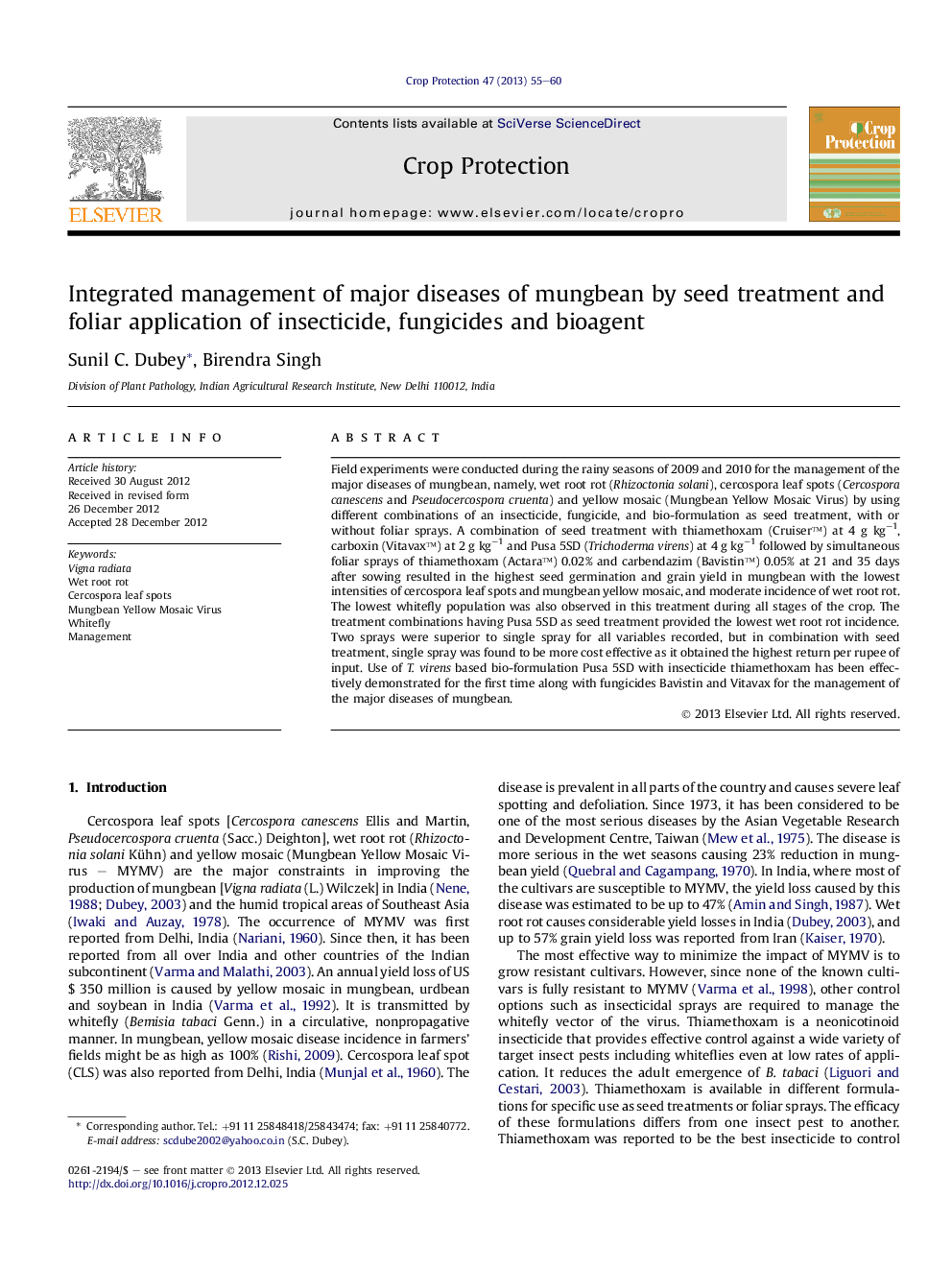| Article ID | Journal | Published Year | Pages | File Type |
|---|---|---|---|---|
| 4506084 | Crop Protection | 2013 | 6 Pages |
Field experiments were conducted during the rainy seasons of 2009 and 2010 for the management of the major diseases of mungbean, namely, wet root rot (Rhizoctonia solani), cercospora leaf spots (Cercospora canescens and Pseudocercospora cruenta) and yellow mosaic (Mungbean Yellow Mosaic Virus) by using different combinations of an insecticide, fungicide, and bio-formulation as seed treatment, with or without foliar sprays. A combination of seed treatment with thiamethoxam (Cruiser™) at 4 g kg−1, carboxin (Vitavax™) at 2 g kg−1 and Pusa 5SD (Trichoderma virens) at 4 g kg−1 followed by simultaneous foliar sprays of thiamethoxam (Actara™) 0.02% and carbendazim (Bavistin™) 0.05% at 21 and 35 days after sowing resulted in the highest seed germination and grain yield in mungbean with the lowest intensities of cercospora leaf spots and mungbean yellow mosaic, and moderate incidence of wet root rot. The lowest whitefly population was also observed in this treatment during all stages of the crop. The treatment combinations having Pusa 5SD as seed treatment provided the lowest wet root rot incidence. Two sprays were superior to single spray for all variables recorded, but in combination with seed treatment, single spray was found to be more cost effective as it obtained the highest return per rupee of input. Use of T. virens based bio-formulation Pusa 5SD with insecticide thiamethoxam has been effectively demonstrated for the first time along with fungicides Bavistin and Vitavax for the management of the major diseases of mungbean.
Graphical abstractFigure optionsDownload full-size imageDownload as PowerPoint slideHighlights► An integrated management strategy was developed for major diseases of mungbean. ► A combined seed treatment with thiamethoxam, carboxin and Pusa 5SD proved effective. ► Combined foliar sprays of thiamethoxam and carbendazim at 21 and 35 DAS proved effective. ► The combination of seed treatment and two foliar sprays proved to be the best. ► A combination with seed treatment with single spray was found to be more cost effective.
